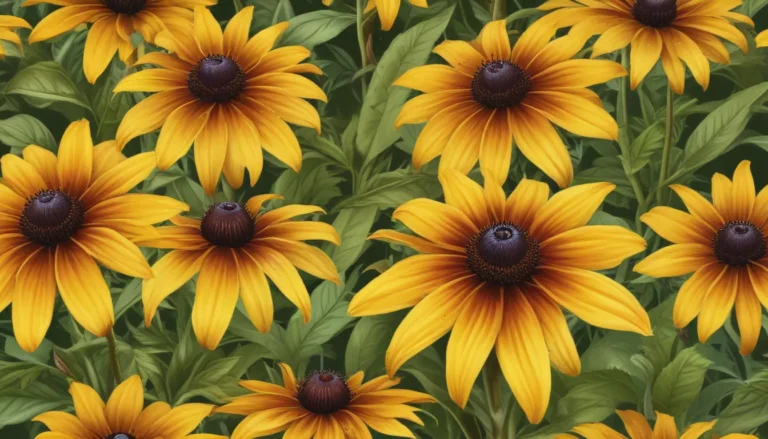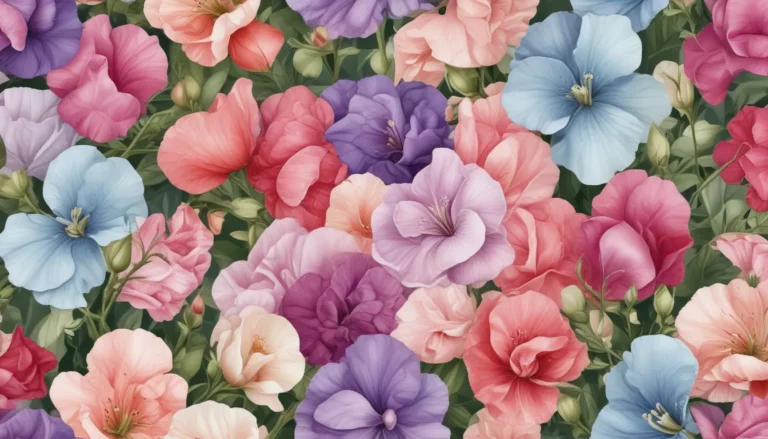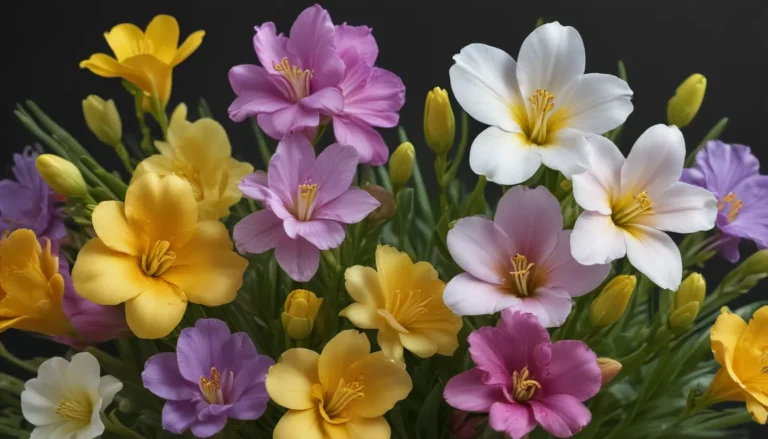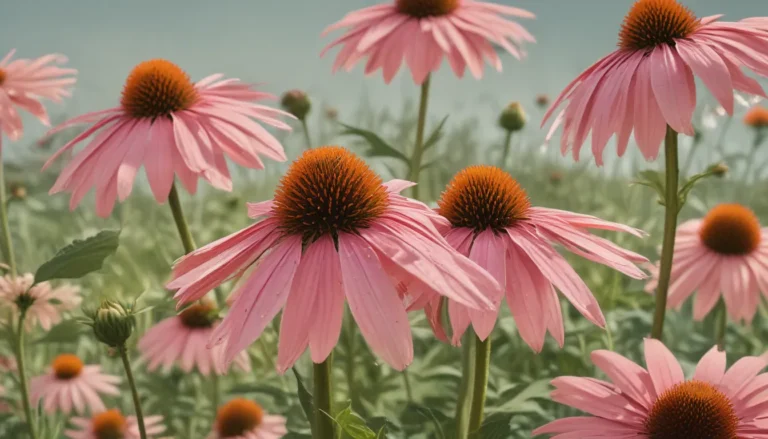The pictures we use in our articles might not show exactly what the words say. We choose these pictures to make you interested in reading more. The pictures work together with the words but don’t take their place. The words still tell you the important facts.
Goldfish plants are not only visually captivating but also serve as natural air purifiers, making them an excellent choice for plant lovers looking to add a touch of exotic beauty to their indoor spaces. In this comprehensive guide, we will delve into the enchanting world of Goldfish plants, exploring their origins, care requirements, and unique characteristics. Whether you are a seasoned gardener or new to the world of indoor plants, this guide will provide you with valuable insights to help you care for and appreciate these stunning plants.
The Enchanting Origins of Goldfish Plants
Goldfish plants, also known as Nematanthus, are native to the tropical regions of Central and South America, thriving in countries like Costa Rica, Ecuador, and Brazil. The warm and humid climate of these regions provides the perfect environment for Goldfish plants to flourish, showcasing their vibrant flowers and glossy green leaves.
Diverse Species and Varieties
With over 40 recognized species of Goldfish plants, plant enthusiasts have a wide range of options to choose from when adding these captivating plants to their collection. Each species boasts unique characteristics and flower colors, allowing you to create a diverse and colorful display in your home or garden.
Hanging Beauty: A Unique Growth Habit
One of the most distinct features of Goldfish plants is their vine-like growth habit, making them an ideal choice for hanging baskets and planters. The cascading leaves and vibrant flowers create a mesmerizing display that adds an element of exotic beauty to any space.
Vibrant Flowers and Intriguing Blooming Patterns
Goldfish plants are renowned for their stunning flowers, which come in a variety of colors such as orange, red, yellow, and pink. The unique shape of the flowers, resembling a goldfish swimming in water, adds a playful and whimsical touch to these plants. Goldfish plants bloom intermittently throughout the year, with peak flowering occurring in the spring and summer seasons, bringing bursts of color and elegance to your surroundings.
Easy Care and Maintenance
Despite their striking appearance, Goldfish plants are relatively easy to care for, making them a suitable choice for both experienced gardeners and beginners. These plants thrive in bright indirect light and require well-draining soil to prevent root rot. Regular watering and occasional misting to create a humid environment will help maintain the health and vitality of your Goldfish plant.
Air-Purifying Qualities
In addition to their aesthetic appeal, Goldfish plants serve as natural air purifiers, filtering out harmful toxins from the surrounding environment. This not only contributes to improved indoor air quality but also creates a healthier living space for you and your loved ones.
Hybrid Varieties and Symbolic Meaning
Plant enthusiasts and horticulturalists have developed several hybrid varieties of Goldfish plants, each with its own unique characteristics and flower colors. These hybrids enhance the beauty of these plants, further adding to their allure. In some cultures, Goldfish plants are associated with prosperity, luck, and abundance, making them a popular choice for gifting on special occasions.
Medicinal Uses and Decorative Element
Certain species of Goldfish plants are used in traditional medicine for their anti-inflammatory, antifungal, and antibacterial properties. These plants are believed to treat ailments such as skin infections and digestive disorders. Beyond their medicinal uses, Goldfish plants add a touch of exotic beauty and elegance to any interior or outdoor space, creating a stunning decorative element that brings joy and tranquility.
Creating the Perfect Environment for Your Goldfish Plant
To ensure your Goldfish plant thrives and remains healthy, it's essential to create the ideal environment for them. Here are some tips to help you care for your Goldfish plant:
- Light: Place your Goldfish plant in bright indirect light to ensure it receives the proper amount of sunlight without being exposed to direct sunlight, which can scorch its leaves.
- Watering: Keep the soil evenly moist by watering the plant when the top inch of soil feels dry to the touch. Avoid overwatering, as it can lead to root rot.
- Humidity: Goldfish plants appreciate high humidity, so consider placing a tray of water near the plant or misting its leaves regularly to create a moist environment.
- Fertilization: During the growing season, fertilize your Goldfish plant every 2-4 weeks with a balanced, water-soluble fertilizer diluted to half-strength. Avoid fertilizing during the winter months when growth slows down.
- Propagation: You can propagate your Goldfish plant through stem cuttings. Simply take a cutting from a healthy stem, remove the lower leaves, and place it in a moist rooting medium. Keep the soil moist until roots develop, then transplant the cutting into a new pot.
FAQs
- How often should I water the Goldfish Plant?
-
Goldfish Plants thrive in moist soil, so it’s important to keep the soil evenly moist. Water the plant when the top inch of soil feels dry to the touch, but avoid overwatering as it can lead to root rot.
-
Can I grow the Goldfish Plant indoors?
-
Yes, the Goldfish Plant is well-suited for indoor cultivation. It prefers bright, indirect light, so placing it near a window or in a well-lit room is ideal. Avoid placing it in direct sunlight, as it can scorch the leaves.
-
How can I propagate the Goldfish Plant?
-
Propagating a Goldfish Plant can be done through stem cuttings. Simply take a cutting from a healthy stem, remove the lower leaves, and place it in a moist rooting medium. Keep the soil moist until roots develop, then transplant the cutting into a new pot.
-
Does the Goldfish Plant require special fertilizer?
-
The Goldfish Plant benefits from regular fertilization during the growing season. Use a balanced, water-soluble fertilizer diluted to half-strength every 2-4 weeks. However, avoid fertilizing during the winter months when growth slows down.
-
Is the Goldfish Plant toxic to pets?
- While the Goldfish Plant is generally considered non-toxic to pets, it’s always best to keep an eye on your furry friends as plant reactions can vary. If your pet shows any signs of discomfort after interaction with the plant, consult a veterinarian.
Embrace the Beauty of Goldfish Plants
Goldfish plants bring a unique and captivating beauty to any indoor or outdoor space, making them a must-have for plant enthusiasts. Their vibrant flowers, easy care requirements, and air-purifying qualities set them apart as a standout choice among houseplants. Whether you're looking to add a pop of color to your living space or create a tropical oasis, the Goldfish plant is an excellent option that will surely delight and inspire you.
In conclusion, the Goldfish plant is a fascinating addition to any plant collection, offering not only beauty but also health benefits and symbolic meaning. Embrace the charm of these stunning plants and discover the joy they bring to your home. So why not introduce a Goldfish plant into your space and experience the magic of these enchanting plants firsthand?
With a wealth of fascinating facts and practical tips on caring for Goldfish plants, this guide aims to educate and inspire plant lovers of all levels. By creating a nurturing environment and understanding the unique characteristics of Goldfish plants, you can cultivate a thriving and vibrant display that adds beauty and vitality to your surroundings. Explore the enchanting world of Goldfish plants and embark on a journey of discovery and delight with these captivating and magical plants.






